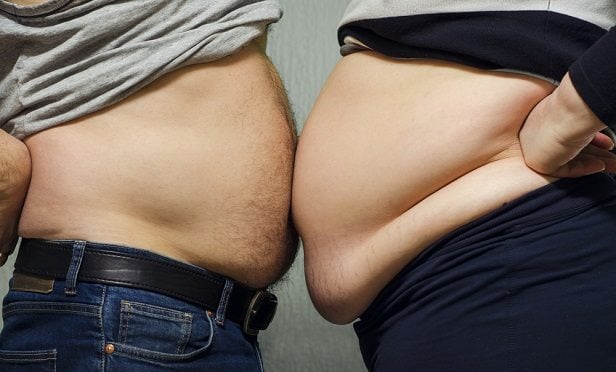 In the 44 states where the average annual household income is under $20,000, severe obesity will be the most common weight class.
In the 44 states where the average annual household income is under $20,000, severe obesity will be the most common weight class.
In a decade, the obesity problem in the U.S. will encompass half the population, according to a study published in the New England Journal of Medicine. And a quarter will be severely obese, the New York Times warns.
The researchers from Harvard and George Washington universities project that adult obesity will hit at least 35 percent in every state, but in 29 states that number will be higher than 50 percent.
Related: Millennials face greater risk of obesity-related cancer than Boomers
No state in the country is going to dodge this, with women expected to be harder hit than men, at nearly 28 percent by the end of the decade. Blacks will also suffer more, with a third of them experiencing severe obesity—and categorizing their group as the most affected among races and ethnicities.
And some states will also be in for higher rates as well, including Alabama, Arkansas, Kansas, Louisiana, Mississippi and Oklahoma.
Currently, the Centers for Disease Control and Prevention estimates that 40 percent of U.S. adults are obese—but by 2030, that will hit 49 percent. And the chief sufferers will be those who can least afford food. In the 44 states where the average annual household income is under $20,000, severe obesity will be the most common weight class, but in only one state where income is over $50,000. In fact, 32 percent of low-income adults will be severely obese.
"The causes of obesity are very complex and include characteristics related to where you live, your culture and even your friends," June Stevens, a spokesperson for The Obesity Society and a professor at the University of North Carolina at Chapel Hill, told MedicineNet.
Stevens added, "These relationships contribute to different groups of Americans being affected by the obesity epidemic differently. In order to effectively prevent and treat obesity, it's useful to understand these differences."
But the prevalence and low cost of processed foods and the inaccessibility and higher cost of healthy foods in poor areas are contributing to the trend. Marlene Schwartz, director of the Rudd Center for Food Policy and Obesity at the University of Connecticut, who was not involved in the study, says, "As a society, we have a responsibility to make it easier for people to have a healthy lifestyle."
At present, 40 percent of American adults are obese, with just 18 percent severely so. But present trends will lead to approximately 49 percent having become obese by 2030, while 24 percent will have become severely obese—something that used to be rare.
Read more:
- Legal discrimination against the obese affects women, their finances, their retirement
- 7 states where the obesity rate is 35 percent or higher
- Obesity exacts high productivity penalty along with higher medical costs
© 2025 ALM Global, LLC, All Rights Reserved. Request academic re-use from www.copyright.com. All other uses, submit a request to [email protected]. For more information visit Asset & Logo Licensing.







